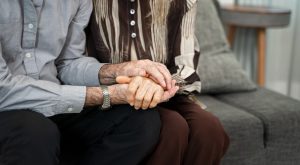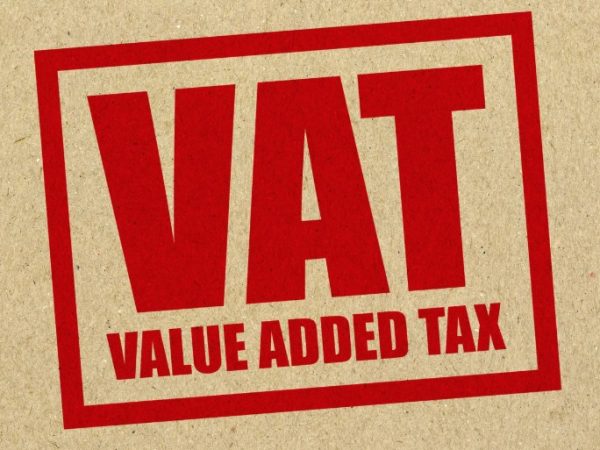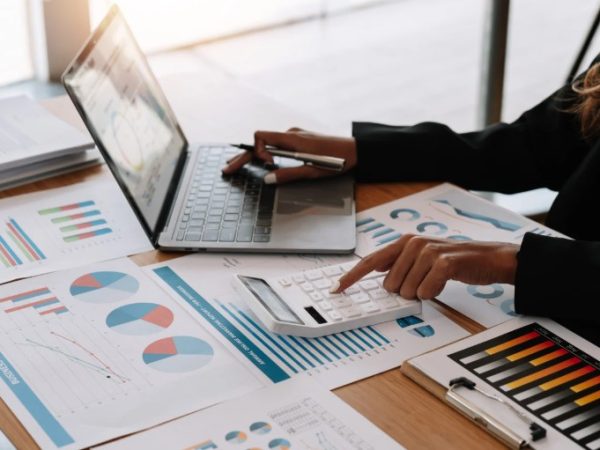
How to Transfer Tax Allowance to Spouse in the UK?
Navigating tax benefits can feel overwhelming, especially with the complexities of various allowances and reliefs available. One such valuable scheme in the UK is the Marriage Allowance, which allows eligible couples to transfer a portion of their tax-free personal allowance to their spouse. This can significantly reduce your overall tax bill.
In this comprehensive guide, I’ll explain how the Marriage Allowance works, who qualifies, and how to transfer your tax allowance to your spouse step-by-step.
What Is Marriage Allowance?

The Marriage Allowance is a tax relief provided by the UK government for married couples and civil partners. It enables one partner to transfer up to 10% of their unused Personal Allowance to the other, reducing the recipient’s tax liability.
The Personal Allowance is the amount of income you can earn before you start paying income tax. For the 2023-24 tax year, this amount is £12,570, and 10% of this equals £1,260. By transferring this unused amount to your spouse, they can benefit from an equivalent tax reduction of up to £252 annually.
Step-by-Step Guide to Transferring Tax Allowance
Step 1: Confirm Your Eligibility
Begin by checking your eligibility for the Marriage Allowance. This involves:
- Verifying that one partner’s income is below the Personal Allowance threshold.
- Ensuring that the other partner’s income is within the basic-rate taxpayer range.
To confirm how much you can save, use the official Marriage Allowance calculator on GOV.UK.
Step 2: Estimate the Tax Relief
If eligible, the lower-earning partner can transfer up to £1,260 of their unused Personal Allowance. This increases the higher-earning partner’s tax-free income limit, reducing their overall income tax bill.
For example:
- If your spouse earns £15,000 annually, their Personal Allowance is £12,570. Transferring £1,260 leaves them with £11,310, still within the threshold.
- The recipient’s tax bill reduces by 20% of £1,260, amounting to £252.
Step 3: Submit Your Application to HMRC
The easiest way to apply is online through the official GOV.UK Marriage Allowance portal.
- Log in using your Government Gateway account credentials.
- Provide your details, including your National Insurance number and those of your spouse.
- Complete the application form and submit it.
HMRC will process your application, update the tax codes for both partners, and confirm the changes.
Who Can Apply for Marriage Allowance?

Marriage Allowance is a valuable tax relief for couples, but not everyone qualifies. Here’s a breakdown of the eligibility criteria:
Eligibility Requirements
You can benefit from Marriage Allowance if:
- You’re married or in a civil partnership (living together alone does not qualify).
- Your income is below the Personal Allowance threshold (£12,570 for the 2023-24 tax year), or you do not pay Income Tax.
- Your partner pays Income Tax at the basic rate, with an income between £12,571 and £50,270.
- If you’re in Scotland, your partner must pay the starter, basic, or intermediate rate, with income between £12,571 and £43,662.
Exceptions and Special Cases
You can still apply for Marriage Allowance if:
- You or your partner receive a pension.
- You live abroad but are entitled to a Personal Allowance in the UK.
Alternative for Older Couples
If you or your partner were born before 6 April 1935, you might benefit more from the Married Couple’s Allowance. Note that you cannot claim both Marriage Allowance and Married Couple’s Allowance simultaneously.
Backdating Your Claim
One of the key benefits of Marriage Allowance is the ability to backdate your claim to include any tax year since 5 April 2020, provided you were eligible during those years.
How Backdating Works
- HMRC will adjust your partner’s tax bill based on the Personal Allowance rates for the relevant years.
- This could result in a rebate for past overpayments, potentially saving you up to £1,000 for the previous four years combined.
Special Case: Claiming After a Partner’s Death
If your partner has passed away since 5 April 2020, you can still claim the allowance. In such cases, the person managing their tax affairs should contact the Income Tax helpline to process the application.
When to Stopping Marriage Allowance?

Your Personal Allowance will continue transferring to your partner every year unless you cancel the Marriage Allowance.
You should notify HMRC to stop the transfer if:
- Your income exceeds the Personal Allowance threshold.
- Your relationship ends through separation or divorce.
Taking timely action ensures that your tax affairs remain accurate and avoids potential overpayments or underpayments.
Common Scenarios for Transferring Tax Allowance
Scenario 1: Couples with One Partner Earning Below the Tax Threshold
If one partner earns less than £12,570 and the other is a basic-rate taxpayer, this scheme can offer significant tax relief.
Scenario 2: Civil Partnerships and Tax Benefits
Civil partners enjoy the same eligibility and benefits as married couples under the Marriage Allowance scheme.
Scenario 3: Changes in Income Levels
If either partner’s income changes significantly during the tax year, you’ll need to inform HMRC to ensure your tax codes remain accurate and compliant.
How to Make Changes to Your Tax Code?
When you apply for the Marriage Allowance, HMRC automatically updates the tax codes for both partners to reflect the transfer of the Personal Allowance. These adjustments ensure that the tax savings are correctly applied. However, understanding how these changes work and what actions you might need to take is crucial for maintaining accurate tax records.
How Marriage Allowance Affects Your Tax Code?

Once HMRC processes your application, both you and your partner will see changes to your tax codes.
- For the Transferring Partner (Lower Earner):
Your tax code will reflect the reduction in your Personal Allowance. For instance, if your original tax code was 1257L, it might change to 1164N after transferring £1,260. - For the Receiving Partner (Higher Earner):
The recipient’s tax code increases to account for the additional allowance. For example, their tax code might change from 1257L to 1263M, representing the extra £1,260 added to their Personal Allowance.
These adjustments are crucial to ensure that the correct amount of tax is calculated and deducted from your earnings.
Adjusting Your Tax Code with HMRC
Certain life events or financial changes may require you to update your tax code to reflect your current circumstances. Examples include:
1. A Change in Income Levels
- If your income exceeds the Personal Allowance threshold (£12,570), you will no longer qualify for Marriage Allowance. You should inform HMRC to cancel the allowance and update your tax code accordingly.
- Similarly, if your partner’s income rises above the basic-rate tax bracket (£50,270 in most parts of the UK, or £43,662 in Scotland), they will no longer be eligible to receive the allowance.
2. Relationship Changes
-
- In cases of separation or divorce, the Marriage Allowance transfer must be cancelled. Contact HMRC to update your tax records and ensure the allowance is no longer applied.
3. Switching Jobs or Changing Employment Status
-
- If you or your partner changes jobs or moves from employment to self-employment, you may need to review and update your tax code to reflect your new income structure.
Handling Errors or Discrepancies
Occasionally, errors can occur in tax code adjustments. These may result in incorrect tax deductions or allowances being applied. If you notice any discrepancies:
- Review Your Payslip: Check your tax code on your monthly or weekly payslip to ensure it aligns with what HMRC has communicated.
- Contact HMRC Directly: Use the Income Tax helpline or log in to your Personal Tax Account online to query or correct errors.
- Seek Professional Advice: If you’re unsure how to handle a tax code issue, consult a qualified tax adviser or accountant for assistance.
Automatic Adjustments for Future Years
Once approved, the Marriage Allowance transfer will continue each year without requiring reapplication, provided your circumstances remain unchanged. However, any changes to income, employment, or marital status must be reported to HMRC promptly to prevent overpayments or underpayments of tax.
What Are the Benefits of Claiming Marriage Allowance?
The Marriage Allowance is not just a tax-saving measure; it’s a practical way to optimise your household’s financial situation. Here are the key benefits that make it a worthwhile option for eligible couples:
1. Significant Tax Savings
One of the most tangible benefits is the reduction in your tax bill. By transferring £1,260 of your Personal Allowance to your partner, they receive a tax break of up to £252 annually. This amount, while modest, can make a noticeable difference in your household budget, especially for families on a tight income.
2. Backdating for Additional Savings
If you’ve been eligible for Marriage Allowance in previous years but haven’t applied, you can backdate your claim up to four tax years. This could result in a rebate of over £1,000, providing a financial boost for expenses or savings.
3. Maximising Household Income
The scheme helps couples with uneven incomes make the most of their combined earnings. By allowing the lower-earning partner to transfer unused Personal Allowance, it reduces the overall tax burden on the household, effectively increasing disposable income.
4. Straightforward Application Process
The online application process via the GOV.UK Marriage Allowance portal is simple and user-friendly. The entire process can be completed in a matter of minutes, and adjustments to your tax code are handled automatically by HMRC.
5. No Impact on Benefits or Pensions
Unlike some financial arrangements, claiming Marriage Allowance does not affect other entitlements such as state benefits or pensions. This makes it a risk-free way to save on taxes without sacrificing other sources of income.
6. Flexibility and Automatic Renewals
Once your application is approved, the allowance is transferred automatically each year. However, you retain the flexibility to cancel the transfer if your circumstances change, such as a significant income increase or a change in marital status.
7. Supports Civil Partnerships and Modern Families
The Marriage Allowance applies equally to married couples and those in civil partnerships, recognising diverse family structures and ensuring inclusivity in financial benefits.
8. Potential Savings for Older Couples
For couples where one or both partners were born before 6 April 1935, there’s the option to explore the Married Couple’s Allowance for potentially greater savings. This flexibility ensures that older couples receive the most beneficial relief for their situation.
Conclusion
Understanding how to transfer tax allowance to your spouse under the Marriage Allowance scheme is a straightforward way to optimise your household’s tax efficiency.
By meeting the eligibility criteria and following the simple application process, you could save hundreds of pounds each year. Don’t miss out on this opportunity—start your application today!
FAQs About Marriage Allowance
Can I Backdate My Claim for Previous Years?
Yes, you can backdate claims for up to four previous tax years, potentially recovering up to £1,000.
What Happens if My Spouse’s Income Changes?
If your spouse’s income exceeds the basic rate threshold, you’ll need to inform HMRC to stop the Marriage Allowance transfer.
Is Marriage Allowance Available to All Couples in the UK?
It’s only available to married couples and civil partners where one partner earns below the Personal Allowance threshold.
How Long Does the Application Process Take?
Typically, it takes around six weeks for HMRC to process applications, though times may vary.





